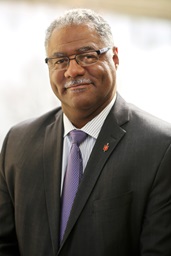Key points:
• The real estate crisis is the church’s elephant in the room, writes Rick Reinhard.
• He argues individual congregations must collect and assess data to determine their future.

Photo by Valerie Smallwood.
Commentaries
The real-estate business is a data business. Look at a simple house listing on Zillow, with number of rooms, square footage, acreage, appliances and comparative pricing. Most churches and annual conferences do not have the sorts of data required to make even the most basic informed real-estate decisions.
The General Council on Finance and Administration's Quadrennium Statistical Forms require United Methodist churches to collect data on many aspects. The most recent form asks churches to provide 120 different pieces of data. Four relate to real estate:
1. Line 24. Market value of church-owned land, buildings, vehicles and equipment.
2. Line 26. Debt secured by church physical assets.
3. Line 62e. Amount received from sale of church assets.
4. Line 62f. Amount received through building use fees, contributions and rentals.
Real estate is a church's largest asset, often comprising 90% or more of a church's total assets and 50% or more of its operating expenses; yet, churches and annual conferences often collect almost no data on real estate. This is a critical gap at a time when more and more churches will be forced to close because of their inability to pay for the huge costs associated with their properties. The real estate crisis is the church's elephant in the room.
My estimates are that the next several years will see the closing of as many as 100,000 houses of worship throughout the United States, up from an estimated 3,750 to 8,000 per year now. While it is easy to blame COVID-19 for the upcoming closings, most of the churches were on the brink of shuttering pre-pandemic.
Smaller-membership numbers, increasing facility costs and an overabundance of church locations in a mobile society have led to a situation where the pandemic serves as the straw breaking the camel's back. The need to collect and analyze more and better data is one of four cornerstones for a church and annual conference to build upon to begin to avert a real-estate crisis. The other three, to be explored in the future, are:
-
1. Factors. Key information, not only about real estate, but also six additional factors that go to determine future viability: market, politics, money, congregation, denomination, partners.
2. Actions. Six possible alternatives for each property: downsize, merge, lease, develop, liquidate, do nothing. 3. Philosophy. A new philosophy about real estate, one about which seminarians are educated, to which personnel are assigned and to which resources are devoted.
What sort of data should churches and annual conferences collect on their real estate?
Beyond Zillow, here are a few:
-
1. Description. What is the description of our property (including site plan and photographs)? How many square feet of land? Of buildings? Of parking? What is the use of the buildings? How big are the rooms? How many bathrooms? What is in the kitchen? When were the buildings built? Renovated? How many entrances and exits? Does the building have elevators? How is handicapped accessibility? What is the maximum capacity?
2. Condition. What is the condition of each section of the property? What major repairs and replacement are required to keep the property operable? When will those need to be made? What is the cost? Is the property in an area affected by natural or human-caused disasters?
3. Value. What is the property's value? On a sales-comparison basis? On a rebuilding-cost basis? On an income-capitalization basis? How were these calculations determined?
4. Leases. What portion of the property is leased to other entities (e.g., other congregations, child care centers, other human-service organizations? For how much? What would market rents be?
5. Deed. What is the status of the property deed? Does it include reversionary clauses or deed restrictions?
6. Regulatory. What is the zoning of the site? Of the surrounding neighborhood? What other regulations (parking, traffic, water, sewer) does the municipality impose?
7. Ratios. What percent of operating costs are spent on property? What percent of assets is tied up in property? What is the property operating cost per worshipper? What is the property-asset value per worshipper? How have these ratios changed over time? How are they projected to change?
8. Congregational health. How vital is the congregation (according to statistics required by GCFA)?
9. Relationships. In addition to these quantitative data, a church should collect contact information and forge and maintain relationships with at least the following officials: mayor, council chair, district council member, council planning committee chair, city manager, planning commission chair, planning director, historic preservation board chair, historic preservation manager, neighborhood association leadership, business association leadership, next-door and across-the-street neighbors, top local commercial realtors, top local mixed-use developers.
Read more
Read Rick Reinhard’s first commentary on managing the church’s real estate portfolio, “Church must tackle its real estate crisis.”
These are the sorts of data to be collected (and relationships to be cultivated), regardless of impending plans involving the congregation or its real estate. The information needs to be updated regularly, especially in a volatile real-estate market.
At the annual conference level, trustees and staff must enter into the discipline of collecting and analyzing data, even with the challenge of building a database from only a small amount of information. If trustees make a good decision on one church alone, it may be worth five or six (or even seven) figures. Beyond monetary ramifications, good real-estate data can make or break the spirit of churches and, perhaps more importantly, preserve social capital in the community that a church and its worshippers serve.
The possible split in The United Methodist Church makes real-estate strategy more, not less, critical.
Because The United Methodist Church is a connectional denomination, a top-down real-estate strategy, similar to those of the Roman Catholic Church and the Church of Jesus Christ of Latter-day Saints, is impossible. So, it is incumbent upon United Methodist bishops, agencies and lay leadership to develop a strategic vision for the real estate of its churches, one that can inspire individual churches. Such a vision requires a grounding in data: how many, how big, what condition, how much value. This grounding is often lacking today.
Thanks to individual initiatives, some excellent redevelopment and repurposing projects are occurring in United Methodist churches across North America. But the need to treat real estate as seriously as Sunday services, Christian missions and religious education can result in strategies that will support the church's mission. It all begins knowing what you have.
Reinhard is associate of The Lakelands Institute and principal of Niagara Consulting Group. He managed economic-development organizations and city agencies for 30 years before working for the past five years in management positions involving properties for The United Methodist Church. He may be contacted at [email protected].
News contact: Joey Butler or Tim Tanton at (615) 742-5470 or[email protected]. To read more United Methodist news, subscribe to the free Daily or Friday (weekly) Digests.
Like what you're reading? Support the ministry of UM News! Your support ensures the latest denominational news, dynamic stories and informative articles will continue to connect our global community. Make a tax-deductible donation at ResourceUMC.org/GiveUMCom.



